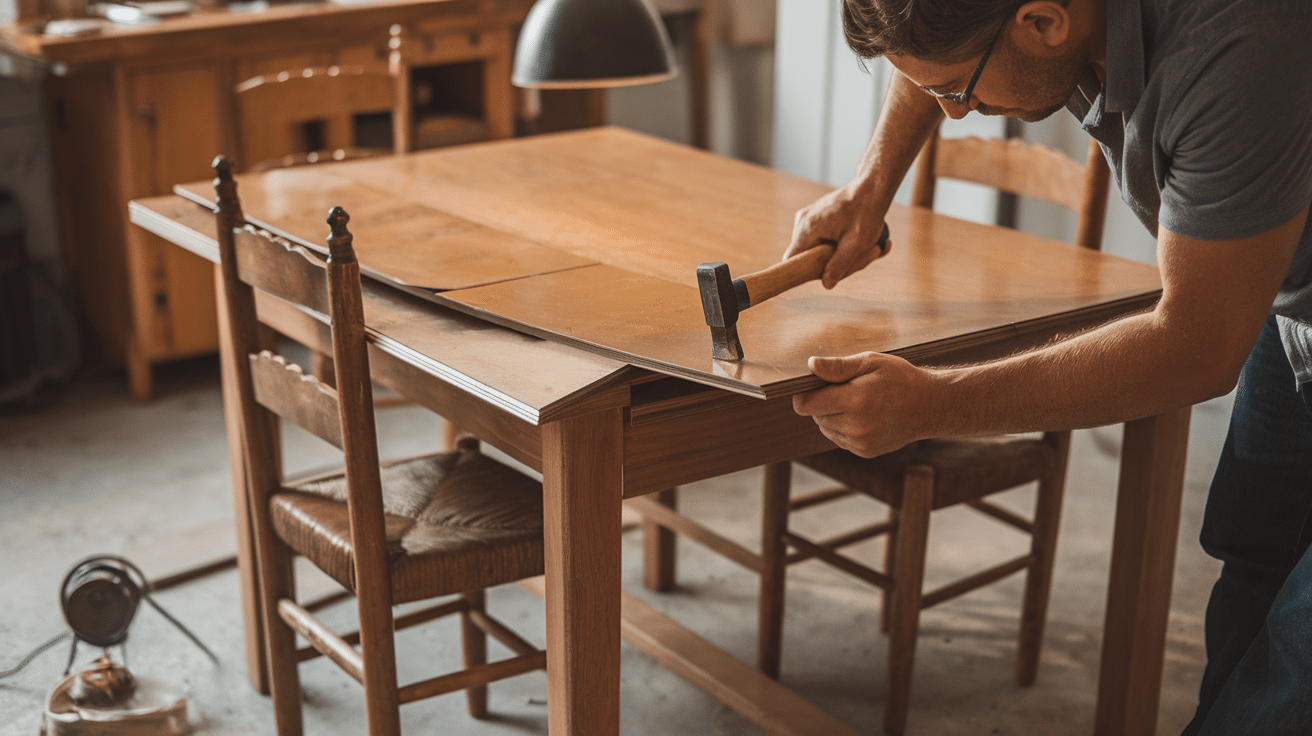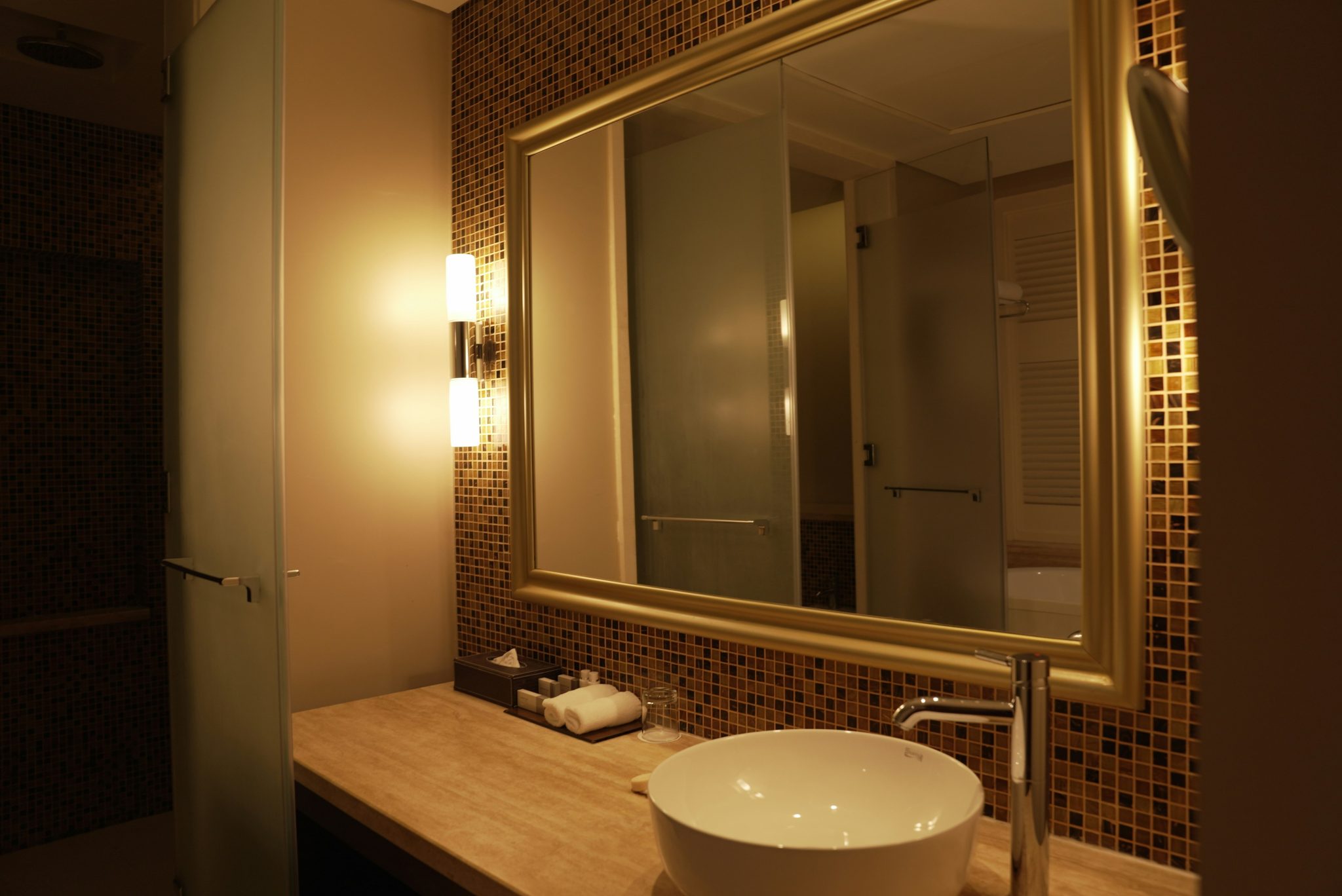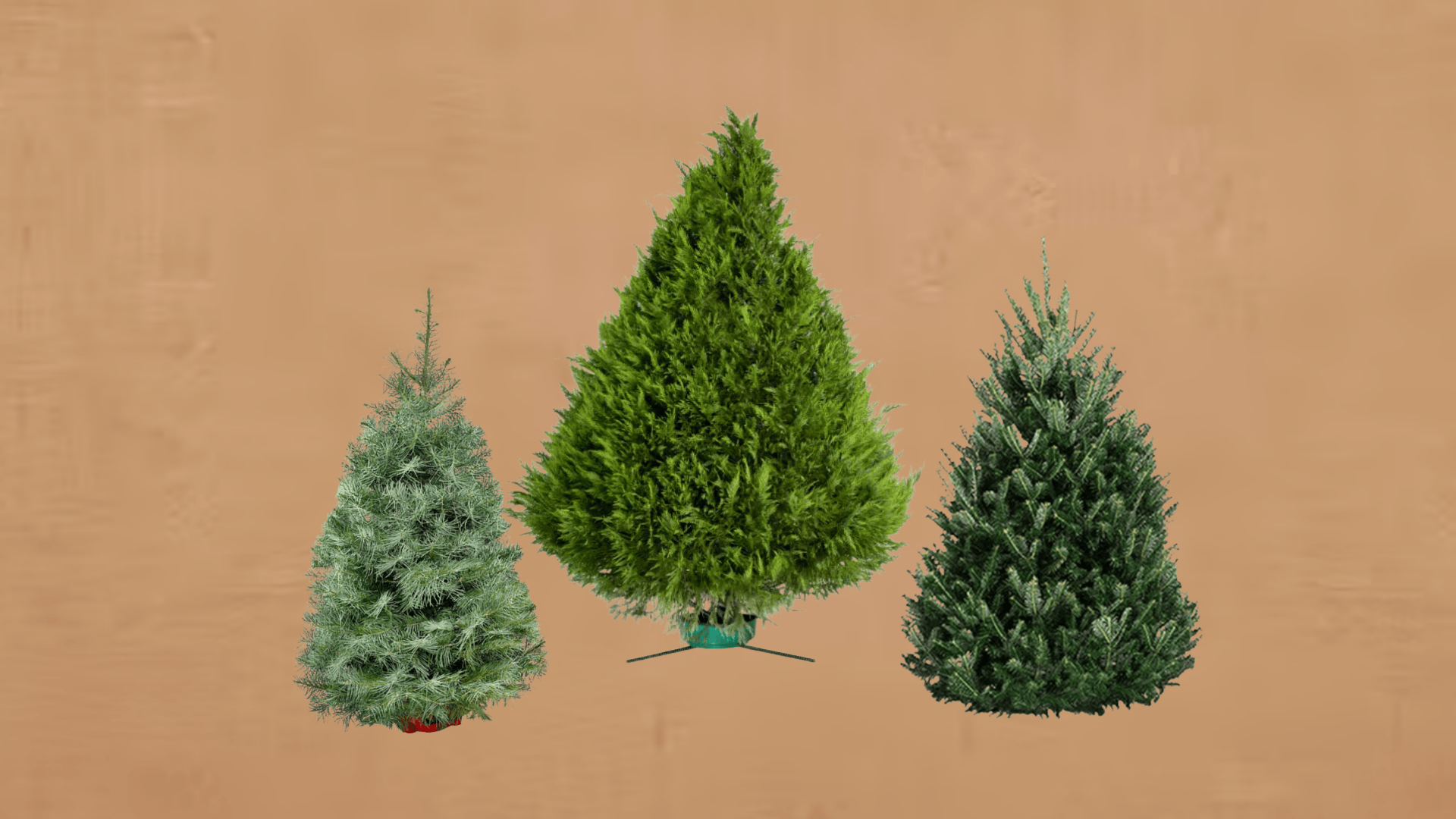How to Remove Veneer for a Fresh Look?
Ever looked at that old dresser covered in peeling veneer and thought, “I wish I could fix this”? I get it. That’s why I created this step-by-step guide to help you transform your tired furniture into something beautiful.
I’ve stripped veneer from over 50 pieces of furniture in my workshop, and I’ve learned every trick (and mistake) along the way.
Whether you’re dealing with a family heirloom or a thrift store find, I’ll show you exactly how to remove veneer without damaging the wood underneath.
In this guide, you’ll learn which tools you actually need, how to test if your piece is worth saving, and the fastest way to get the job done. No fancy equipment is required – just clear steps that work. Ready to give your furniture a second chance? Let’s get started.
Understanding Veneer and Its Adhesion

1. What Is Veneer?
Before we dive into removing veneer, let’s talk about what you’re actually dealing with. Think of veneer like a thin wood sticker – it’s a slice of pretty wood glued onto cheaper wood underneath.
2. The Age Factor
Here’s the important part: The age of your furniture determines how hard or easy this job will be.
I’ve found that pieces made before 1950 usually used hide glue (made from animal parts) to stick the veneer down. This is actually good news – hide glue softens with heat and moisture, making your job easier.
3. Old vs. New Adhesives
Newer furniture? That’s a different story. Modern pieces use synthetic adhesives that form an almost permanent bond. But don’t worry – I’ll show you how to tackle both types.
4. Test Your Piece
Do you want to know if your piece has hidden glue or synthetic adhesive? Try this quick test:
- Press a warm, damp cloth against a small corner for 5 minutes
- Gently lift the edge with a putty knife
- If it starts to separate, you’ve got to hide the glue
- If it stays firmly stuck, you’re dealing with synthetic adhesive
Now that you know what’s holding your veneer in place, you can choose the right removal method. Let’s move on to the tools you’ll need.
Tools & Materials Needed
1. Essential Tools
Before you start, gather these basic tools. I’ll explain why you need each one.
- Heat gun or clothes iron (your main weapon against stubborn glue)
- Wide putty knife (6-inch works best)
- Spray bottle filled with warm water
- Clean rags or old towels
2. Safety First
Working with veneer isn’t dangerous, but you still need to protect yourself. Don’t skip this part – safety gear is crucial, especially when dealing with old furniture.
- Work gloves to protect your hands
- Safety glasses (trust me, veneer chips can fly)
- Dust mask when sanding
- Drop cloth to catch the mess
3. Optional but Helpful
You can get by without these, but they’ll make your job much easier and faster.
- Paint scraper with a sharp blade
- Small pry bar
- Rubber mallet
- Electric sander for cleanup
4. Materials to Be Ready
Keep these supplies within arm’s reach. Trust me – you don’t want to stop mid-project to run to the store.
- Vinegar (helps break down old glue)
- Heavy-duty trash bags
- Mineral spirits for cleanup
- Extra blades for your scraper
Remember: You don’t need to buy the fanciest tools. Basic versions will work just fine. What matters most is having the right tool for the right moment.
Methods for Removing Veneer
1. The Heat Method
Heat is your best friend when removing veneer. I’ve found this method works on most pieces, especially older furniture with hidden glue.
Start with your heat gun or iron on a medium setting. Move slowly in small sections – about 6 inches at a time. When you see the veneer start to bubble, that’s your cue. Slip your putty knife under the edge and gently pry upward. If it resists, apply more heat.
2. The Water Method
For stubborn spots where heat alone won’t do it, try this technique I learned the hard way. First, spray warm water on a small section. Cover it with a damp cloth and let it sit for 15 minutes. Then try lifting with your putty knife. Don’t be discouraged if you need to repeat this process – some spots are just stubborn.
3. Combination Approach
Here’s what usually works best:
Use heat first, then add water if the veneer fights back. Keep your putty knife at a low angle to avoid damaging the wood underneath. I’ve found this one-two punch works on even the most stubborn veneer.
4. For Modern Adhesives
Newer furniture needs a different strategy. The glue won’t respond to heat or water, so you’ll have to work harder. Start by scoring the surface lightly with a utility knife.
Then, use your heat gun on high, working your putty knife under the edges wherever you can. This method takes more time and patience, but it will get the job done.
Remember: If one method isn’t working, switch to another. Sometimes, you’ll need to try different approaches to the same piece. The key is staying patient and letting the heat and water do most of the work for you.
Removing Stubborn Veneer Residue
1. First Assessment
After peeling off the veneer, you’ll likely find patches of old glue stuck to the wood. Don’t panic – this is normal. Take a moment to feel the surface with your hand. Some areas will be smooth, others will feel like sandpaper.
2. Initial Cleanup
Start with scraping. Hold your putty knife at a 45-degree angle and push firmly across the surface. Work with the wood grain, not against it. You’ll be surprised how much residue comes off with just this step.
3. For Hide Glue
Old hide glue responds well to heat and moisture. Dampen a cloth with warm water and vinegar (equal parts), then lay it over stubborn spots for 10 minutes.
The glue should soften enough to scrape away easily. Sometimes, you’ll need to repeat this process a few times.
4. Synthetic Adhesive Removal
Modern glue requires more muscle. Use your heat gun to soften the adhesive while scraping. Keep the heat moving – staying too long in one spot can damage the wood. A sharp scraper blade makes this job much easier, so change your blade when it gets dull.
5. Final Smoothing
Once you’ve removed most of the residue, it’s time for sanding. Start with medium-grit sandpaper and work your way to fine-grit. Be patient here – rushing through sanding can leave marks that show up when you finish the piece.
Remember: The wood underneath is your priority. It’s better to work slowly and carefully than to damage the surface by being too aggressive.
What to Do After Veneer Removal
1. Inspect the Surface
Take a good look at your newly exposed wood. Run your hands over it and look at it from different angles in good light. Don’t rush this step – what you find here determines your next move.
2. Fix Any Damage
Sometimes, you’ll find small gouges or dents that need attention. Mix sawdust from your sanding with wood glue to make a natural-looking filler. Press it firmly into any holes, then let it dry completely before sanding smooth.
3. Prep for Finishing
Now’s the time to make sure your surface is perfect. Start with medium-grit sandpaper and work in the direction of the wood grain. Once the surface feels smooth, switch to fine grit for a polished result. Wipe away all dust with a tack cloth between sandings.
4. Consider Your Options
The fun part begins – deciding how to finish your piece. The exposed wood might be beautiful enough for just a clear coat. Or maybe you’re planning to paint. Either way, make sure to apply a primer or sanding sealer first.
5. Seal the Deal
Whatever finish you choose, apply it in thin, even coats. Good lighting helps you catch any drips or uneven spots. Don’t rush – each coat needs proper drying time. Your patience here really pays off in the final look.
Remember: Your piece has come a long way. Take your time with these final steps to make sure all your hard work shines through in the finished product.
Common Mistakes to Avoid
1. Rushing the Process
I see this all the time: people get excited and try to rip off the veneer like a bandaid. This is the fastest way to damage your furniture. Take your time. Let the heat and moisture do their work. If you feel like you’re forcing it, stop and apply more heat.
2. Skipping the Test Spot
Don’t assume you know what kind of glue holds your veneer. Every piece is different. Before diving in, always test a small, hidden area. This five-minute step can save you hours of frustration and prevent damage to your piece.
3. Wrong Tool Angle
Your putty knife is not a chisel. Keep it as flat as possible against the surface while you work. I learned this the hard way – a steep angle will dig into the wood underneath and leave marks that are hard to fix.
4. Too Much Water
Yes, water helps loosen stubborn veneer, but don’t flood your piece. Excess water can seep into joints, warp the wood, and loosen other glued parts.
Use a spray bottle for control, and always work with damp – not soaking – cloths.
5. Ignoring Safety Gear
I know those safety glasses might seem unnecessary, but veneer can chip and fly unexpectedly. And that dust mask? You’ll want it when you’re sanding off old glue. Your lungs will thank you later.
Remember: Most mistakes happen when you get impatient or overconfident. Stay focused, work methodically, and your project will turn out great.
The Final Word on Veneer Removal
Stripping veneer isn’t the easiest DIY project, but it’s definitely one of the most rewarding. I’ve walked you through the entire process, from understanding what you’re dealing with to avoiding common pitfalls.
Remember – your success depends more on patience than anything else.
Don’t get discouraged if your first attempt isn’t perfect. Each piece of furniture presents its own challenges, and every project teaches you something new.
Start with a small, simple piece to build your confidence. Work slowly, keep your tools sharp, and pay attention to what the wood tells you.
The best part about removing veneer? You’re not just fixing up furniture – you’re giving new life to pieces that might have ended up in a landfill.
Whether you’re planning to paint, stain, or clear coat your stripped piece, you now have all the knowledge you need to get professional-looking results.
Ready to start your project? Gather your tools, set up your workspace, and take that first step. And remember – if you run into trouble, just come back to this guide. Your beautiful, veneer-free piece is waiting to be discovered.
Frequently Asked Questions
How long does it take to remove veneer from a typical dresser?
Plan for about 4-6 hours of actual work time. A dresser with 5-6 drawers usually takes a weekend to complete, including prep and cleanup.
The time varies based on the size, adhesive type, and how stubborn the veneer is. Break the project into smaller sessions if you need to – just cover any unfinished areas to protect them from moisture.
Can I save and reuse the veneer I remove?
While it’s possible, it’s very tricky. Most veneer breaks during removal, especially older pieces. If saving the veneer is important to you, work extra slowly and use more heat than moisture. Focus on lifting entire sections at once rather than smaller pieces.
Will removing the veneer decrease my furniture’s value?
If you’re working with an antique or collectible piece, removing the original veneer might reduce its value. However, if the veneer is already damaged or peeling,
careful removal and refinishing can actually increase the piece’s worth. When in doubt, consult an antique expert first.
What if I find plywood underneath the veneer?
Don’t panic – this is common in furniture made after 1940. Plywood can still be finished beautifully. Just sand it carefully and consider using a grain filler before painting or staining.
Avoid aggressive scraping that might go through the top layer of plywood.
Is it better to use a heat gun or an iron?
Each has its advantages. A heat gun covers more area and gets hotter, but it’s easier to scorch the wood. An iron offers more control and can be used with a damp cloth for steam.
I prefer starting with an iron and switching to a heat gun for stubborn spots. Always start with the lowest heat setting and work your way up as needed.







